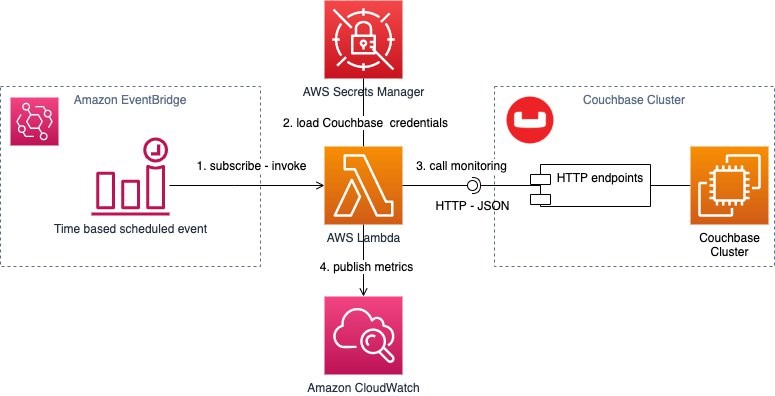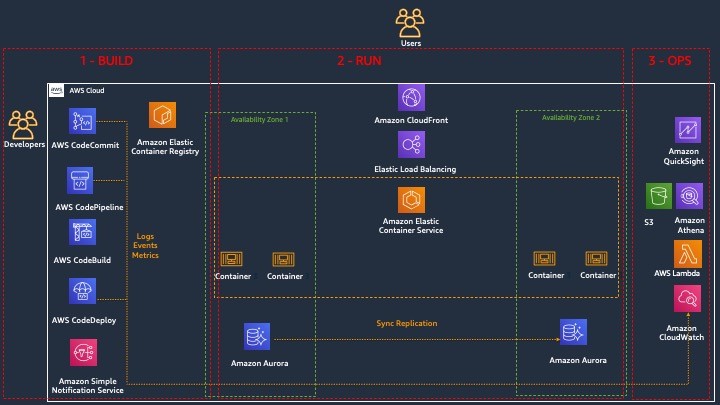AWS Architecture Blog
Category: Amazon CloudWatch
Using AWS Systems Manager in Hybrid Cloud Environments
Customers operating in hybrid environments today face tremendous challenges with regard to operational management, security/compliance, and monitoring. Systems administrators have to connect, monitor, patch, and automate across multiple Operating Systems (OS), applications, cloud, and on-premises infrastructure. Each of these scenarios has its own unique vendor and console purpose-built for a specific use case. Using Hybrid […]
Rate Limiting Strategies for Serverless Applications
Serverless technologies reduce the work needed to set up and maintain computing resources, provide built-in scalability, and optimize agility, performance, cost, and security. The pay-as-you-go model is particularly liberating for developers. You can fail fast, experiment more, and do it fairly cheaply. However, serverless brings its own challenges. In this blog, we’ll examine how to […]
Field Notes: Monitor Your Couchbase Performance and Logs with Amazon CloudWatch
Cloud architects leverage AWS compute services to run customer-managed workloads like Couchbase clusters. While customer-managed workloads may come with their own monitoring metrics and dashboards, customers miss the same level of deep integration with Amazon CloudWatch that the AWS managed services provide. In this post, we show you how to achieve higher levels of observability […]
Disaster Recovery (DR) Architecture on AWS, Part III: Pilot Light and Warm Standby
In this blog post, you will learn about two more active/passive strategies that enable your workload to recover from disaster events such as natural disasters, technical failures, or human actions. Previously, I introduced you to four strategies for disaster recovery (DR) on AWS. Then we explored the backup and restore strategy. Now let’s learn about […]
Journey to Adopt Cloud-Native Architecture Series: #3 – Improved Resilience and Standardized Observability
September 8, 2021: Amazon Elasticsearch Service has been renamed to Amazon OpenSearch Service. See details. In the last blog, Maximizing System Throughput, we talked about design patterns you can adopt to address immediate scaling challenges to provide a better customer experience. In this blog, we talk about architecture patterns to improve system resiliency, why observability […]
Design Pattern for Highly Parallel Compute: Recursive Scaling with Amazon SQS
Scaling based on Amazon Simple Queue Service (SQS) is a commonly used design pattern. At AWS Professional Services, we have recently used a variant of this pattern to achieve highly parallel computation for larger customers. In fact, any use case with a tree-like set of entities can use this pattern. It’s useful in a workflow […]
How ERGO Implemented an Event-driven Security Remediation Architecture on AWS
ERGO is one of the major insurance groups in Germany and Europe. Within the ERGO Group, ERGO Technology & Services S.A. (ET&S), a part of ET&SM holding, has competencies in digital transformation, know-how in creating and implementing complex IT systems with focus on the quality of solutions and a portfolio aligned with the entire value […]
Using Route 53 Private Hosted Zones for Cross-account Multi-region Architectures
This post was co-written by Anandprasanna Gaitonde, AWS Solutions Architect and John Bickle, Senior Technical Account Manager, AWS Enterprise Support Introduction Many AWS customers have internal business applications spread over multiple AWS accounts and on-premises to support different business units. In such environments, you may find a consistent view of DNS records and domain names […]
Why Deployment Requirements are Important When Making Architectural Choices
Introduction Too often, architects fall into the trap of thinking the architecture of an application is restricted to just the runtime part of the architecture. By doing this we focus on only a single customer (such as the application’s users and how they interact with the system) and we forget about other important customers like […]
Top 10 Architecture Blog Posts of 2019
September 8, 2021: Amazon Elasticsearch Service has been renamed to Amazon OpenSearch Service. See details. As we wind our way toward 2020, I want to take a moment to first thank you, our readers, for spending time on our blog. We grew our audience quite a bit this year and the credit goes to our […]









